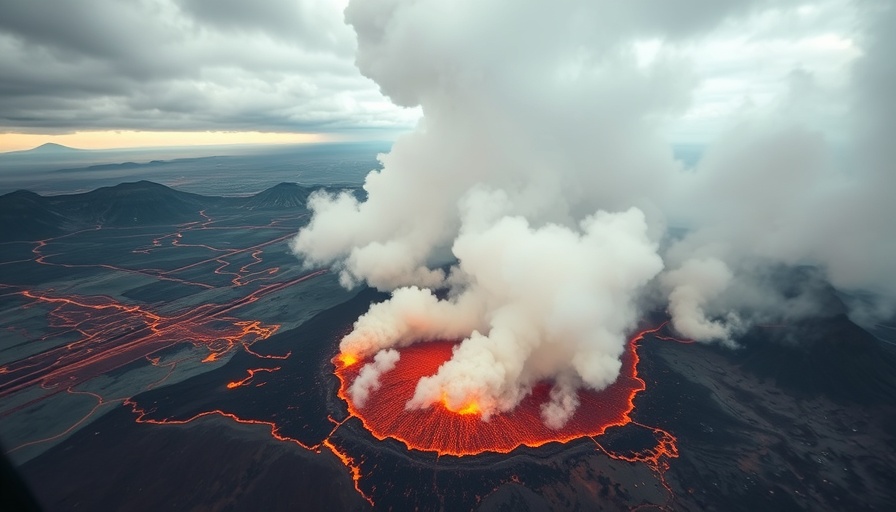
Evacuations Amid Eruption: Iceland's Blue Lagoon in Danger
On July 16, 2025, a volcanic eruption in southwestern Iceland has dramatically impacted one of the country’s most popular tourist destinations, the Blue Lagoon geothermal spa. Tourists were hastily evacuated from the site as lava flows emerged from fissures near the town of Grindavik, located on the Reykjanes Peninsula. This event follows a series of seismic activities that have been rattling Iceland since late 2023, marking the revival of volcanic activity in an area long thought dormant.
The Rapid Response to Eruption
The eruption started early in the morning, around 4 a.m., prompting quick action from local authorities who evacuated a campsite in Grindavik shortly thereafter. Guests at the renowned Blue Lagoon had mere moments to pack their belongings before being whisked away to safety. The Icelandic Meteorological Office reported that while lava is flowing southeast from a 2,300 to 3,300 feet wide fissure, it currently poses no threat to infrastructure.
A Historical Perspective: Iceland's Volcanic Activity
Iceland is well-known for its robust geological activity; sitting atop the Mid-Atlantic Ridge, it has 33 active volcanic systems, more than any other European nation. This phenomenon is a result of the country’s position on a boundary between the North American and Eurasian tectonic plates. Notably, the Eyjafjallajökull eruption of 2010 serves as a reminder of the potential disruptions that can occur. That eruption not only impacted local residents but also severely disrupted global air travel, leading to widespread cancellations.
Local Community Impact and Resilience
Grindavik has experienced a series of volcanic activities since the emergence of the volcano in November 2023, with at least seven eruptions recorded the following year. The most recent incident comes on the heels of an earlier evacuation in April when flames and smoke required local homes to be evacuated. Fortunately, authorities have maintained that the town itself remains unaffected despite the ongoing eruptions.
The Unique Allure of the Blue Lagoon
The Blue Lagoon is not only a spa; it's an integral part of Iceland's tourism and cultural landscape, drawing visitors from around the globe for its healing geothermal waters. Its appeal lies in the combination of natural beauty and the tranquility of the setting, creating a unique experience for tourists. The current challenges underscore the vulnerabilities tourism faces amidst Iceland's active geological history.
Future Insights: What Lies Ahead?
As the Reykjanes Peninsula continues to experience volcanic activity, experts are monitoring the situation closely. The possibility of further eruptions remains, urging potential tourists to stay informed. Authorities continue to enhance safety measures, ensuring that the Blue Lagoon and surrounding communities can respond swiftly to any future volcanic episodes.
What Tourists Should Know
For those planning to visit Iceland, understanding the land's natural volatility is crucial—volcanic eruptions, while frequent, are managed effectively by local authorities. Travelers should remain updated on volcanic activity and follow guidelines provided by Iceland’s Civil Protection Agency. This proactive stance not only keeps locals safe but also protects the interests of tourists who flock to experience the enchanting beauty of Iceland.
Concluding Thoughts: Staying Informed
The recent eruptions serve as a reminder of Iceland's incredible geological power and the importance of readiness in the face of nature's unpredictability. Tourists are encouraged to stay connected with local news outlets
and government alerts for the most current advisories. By understanding the issues at hand, travelers can not only protect themselves but also appreciate the magnificence of Iceland's landscapes, shaped by volcanic activity over centuries.
 Add Element
Add Element  Add Row
Add Row 



Write A Comment